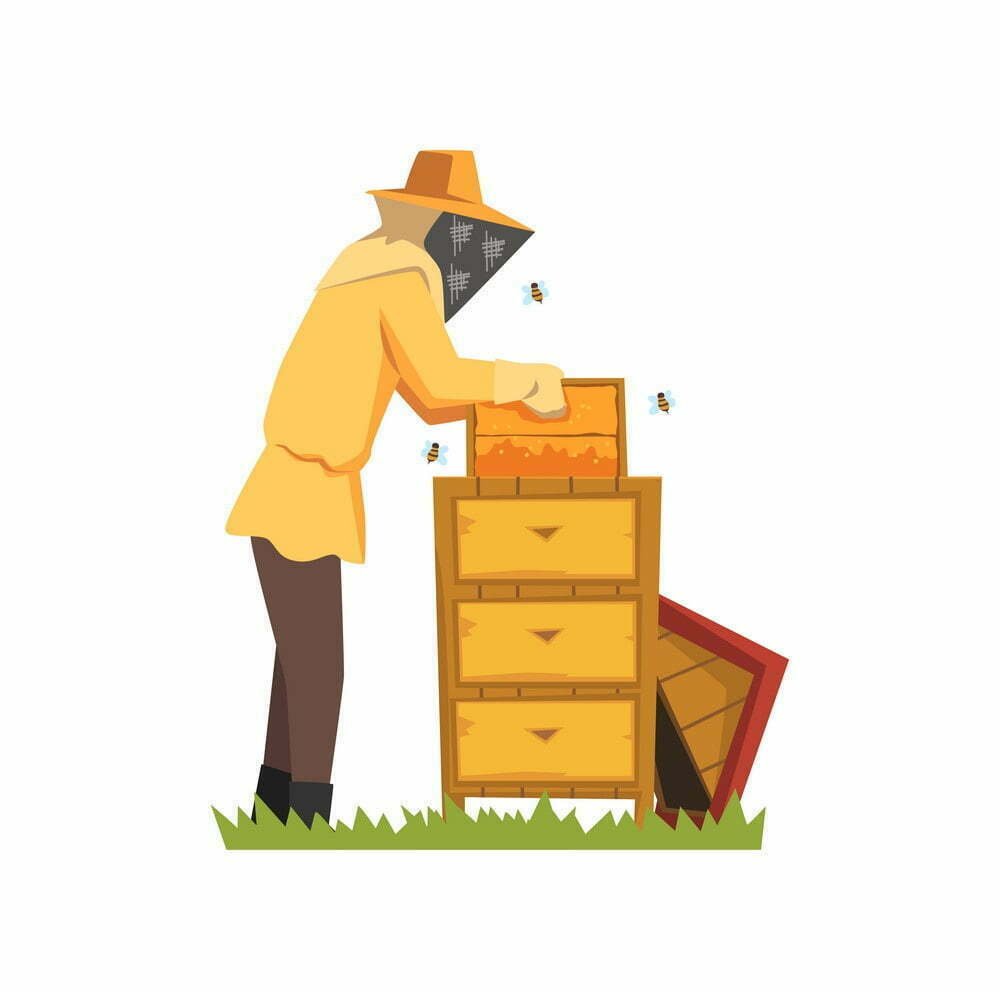Beehive ventilation is the process of increasing fresh air flow inside the beehive mostly through natural methods. Every living being requires fresh air for survival as is the case with honeybees. There are many strategies to help increase the ventilation process inside the beehive. The brood, the queen bee, and the worker bees all require some optimal conditions to survive and thrive. Beehive ventilation helps in increasing and maintaining the airflow inside the hive. It is very important for making your beekeeping efforts successful.
The worker bees help generate enough air to cool down the hive and evaporate moisture from the nectar by fanning their wings. The temperature inside the hive is dependent on these two factors. Honeybees survive and are at most peaceful under warm conditions (around 15 degrees Celsius). However, any slightly upward increase in the temperature will cause overheating which is detrimental to the wellbeing of the honeybee colony.
The various factors involved in beehive ventilation are discussed below or you can find more information on bee attire about beekeeping tips.
The honeybee requires warm weather to survive and thrive. They are however intolerant to extreme temperatures, hence it is required that the temperatures are kept at certain optimum levels. Good ventilation helps in raising brood, producing good quality honey, and overall health of the bee colonies.
Some of the major reasons to keep beehives well-ventilated are –
Queen and brood survival
The queen and the brood form a major part of the honeybee colony. The queen bee is responsible for the major part of the beekeeping process whereas the brood grows up to form most of the population of the hive. Ventilation keeps the developing brood warm and survives inside the hive. The temperature inside the hive should be cool during summers and warm during winters. The ideal temperature range for the survival of the queen bee throughout winter is between 15 degrees celsius to 30 degrees celcius. As for the brood, the desired temperature level is between 25 degrees Celcius to 32 degrees celcius. Any shift in the required temperature levels may result in weak and retarded bees.
Prevent condensation – the bee killer
Any water inside the beehive is a kind of red alert. Condensation poses a serious risk to the well-being of honeybees in cold weather. A little level of moisture is required during summers to cool down the hive but these moisture droplets are harmful during cold seasons. During summer, water droplets found on the surface of combs help induce the cooling effect when air passes over the combs, acting as air conditioning for the brood and honey.
Unfortunately, the same can be detrimental to the overall health of the bee colony said during cooler winter months.
Beware of summers
The summer heat has the most adverse effect on the growth and health of honeybees. Warm condition is the most ideal for honeybees. Summer is a peak season for honeybees.
Bees mostly hate the hot summer sun and its harmful rays so it is important to provide some sort of shade to the beehive frame.
The hive stand
A hive stand is a multi-purpose stand that helps in easing the work of lifting heavy boxes. It is also important during a hive inspection.
Beehive ventilation can also be achieved by installing hive stands, it’s an important beekeeping terminology. The raised hives are placed as such to receive good airflow. The airflow that can enter from beneath the beehive stand helps in the removal of excessive moisture inside the hive.
Shade
A shade can help keep hive temperature within the required limits in hot areas or during hot summer months. Shades shield the honeybee colony from direct sunlight that can harm both brood and adult bees. Honeybees have a strong dislike for direct sunlight and winds. Due to sunlight and strong winds, most honeybees begin to abscond. Absconding is the process when bees move away from the bee colony in search of favorable conditions.
A hole in the outer cover
Ventilation can also be done by making a hole in the outer cover of the hive. The beehive should be covered with some sort of shelter. The moisture inside the hive can flow out of the hive also regular fresh airflow is available.
Ventilated inner covers
Inner covers for beehives help in air ventilation by helping deflect the airflow in and out. This inner cover connects the top center part of the upper brood chamber with the outside area of the hive. Nowadays screened inner covers are preferred over traditional covers.
Hive material
The build material of the hive plays a very important role in the ventilation process. The material of the hive must be a thick wooden frame that protects honey bees from wild pests and insects, provides insulation, and can stand extremely low temperatures. Therefore it is recommended that any inspection of the hive should be carried out during summers and not winters.
